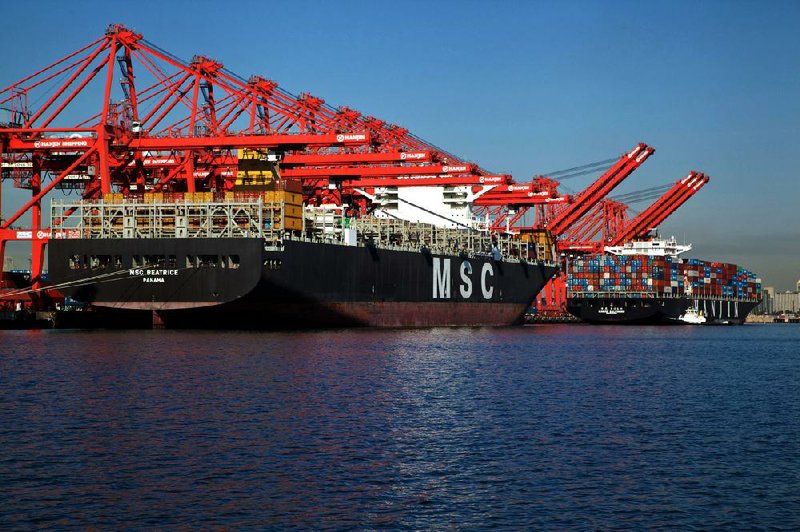WASHINGTON — The U.S. trade deficit widened in August from July because exports fell to the lowest level in six months. The wider deficit likely dragged on already-weak economic growth.
The deficit grew 4.1 percent to $44.2 billion in August, the biggest gap since May, the Commerce Department said Thursday.
Exports dropped 1 percent to $181.3 billion. Demand for American-made cars and farm goods declined.
Imports edged down a slight 0.1 percent to $225.5 billion. Purchases of foreignmade autos, aircraft and heavy machinery fell. The cost of oil imports rose sharply.
A wider trade deficit acts as a drag on growth. It typically means the U.S. is earning less on overseas sales of Americanproduced goods while spending more on foreign products.
Trade contributed to the tepid 1.3 percent annual growth rate in the April-June quarter. But Steven Wood, chief economist at Insight Economics, predicts that trade will not help economic growth in the July-September quarter and that the weaker exports could actually detract from it.
Most economists don’t expect the economy to grow much more than 2 percent for the rest of the year.
The trade deficit is running at an annual rate of $561.6 billion, up slightly from last year’s $559.9 billion imbalance.
American manufacturers have been hampered by slumping economies in Europe, China and other key export markets. Many European countries are in recession. The region accounts for about onefifth of U.S. exports.
For August, the deficit with China dipped 2.3 percent to $28.7 billion. U.S. exports edged up modestly, while imports from China fell. For the year, the U.S. deficit is on track to surpass last year’s record, the highest ever recorded with a single country.
The deficit with the European Union fell 2 percent in August to $11.7 billion. U.S. exports to the region outpaced imports. However, economists expect U.S. sales to Europe to weaken in coming months.
The U.S. deficit with Japan fell 1.4 percent in August to $6.7 billion. American exports to Japan rose to the highest level since March 1996.
The International Monetary Fund this week projected global growth of just 3.3 percent for the year and 3.6 percent in 2013. The downgrade from its July forecast reflected disappointing growth in the United States, spreading recessions in Europe and a sharp slowdown in China.
A separate report from the Labor Department showed prices of goods imported into the U.S. climbed 1.1 percent in September for a second month. Economists had projected the gauge would rise 0.7 percent, according to the median estimate in a Bloomberg survey.
The cost of imported fuel increased 4.4 percent in September from the previous month. Import prices minus fuel rose 0.2 percent last month, the first gain since April.
The trade report showed the value of imported crude oil was little changed in August at $25.8 billion. An increase in the cost of a barrel of crude to $94.36 from $93.83 was almost totally offset by a drop in the number of barrels bought.
Information for this article was contributed by Martin Crutsinger of The Associated Press and Alex Kowalski, Michelle Jamrisko and Chris Middleton of Bloomberg News.
Business, Pages 25 on 10/12/2012
